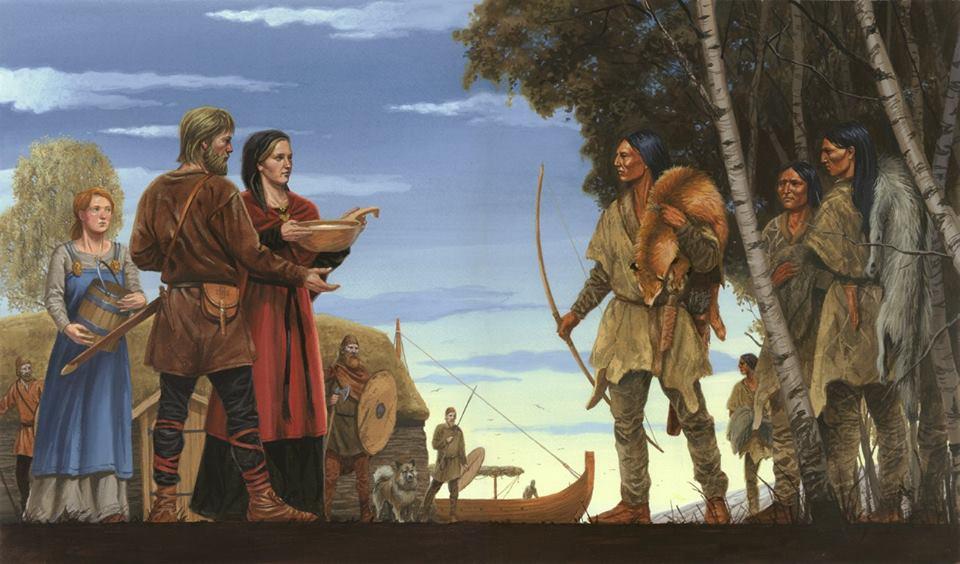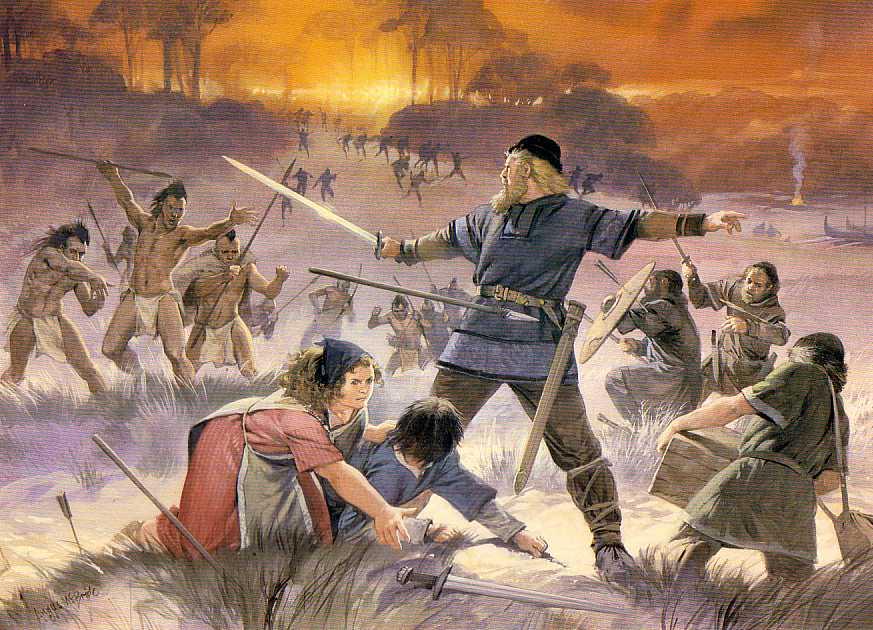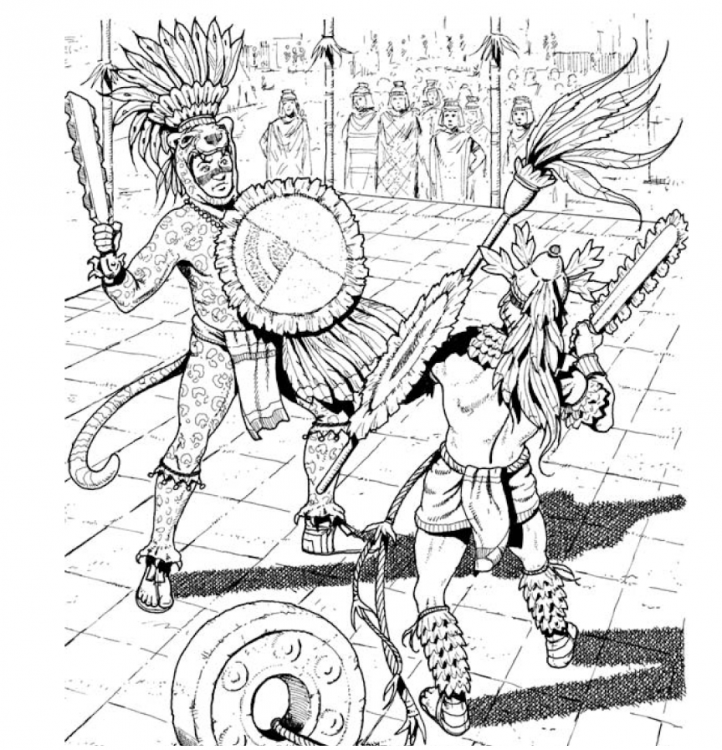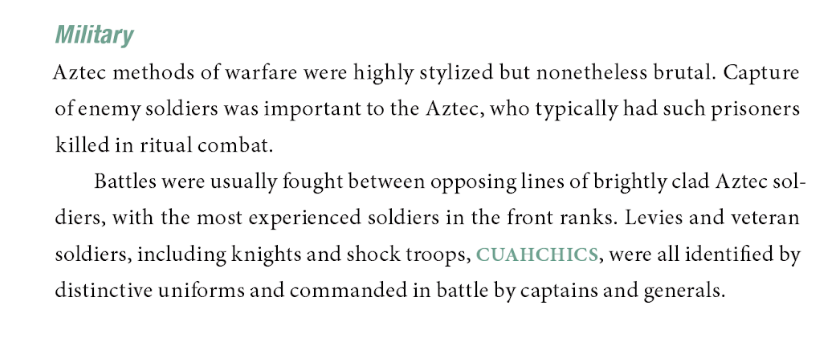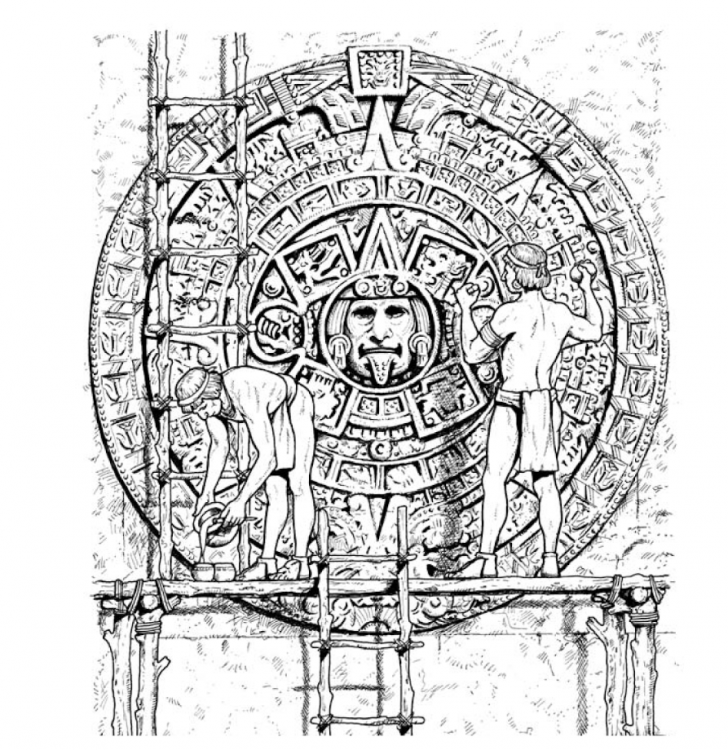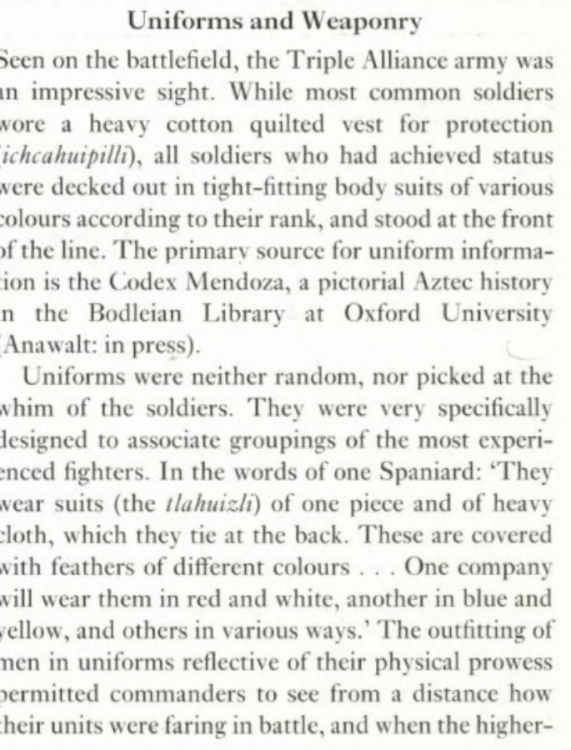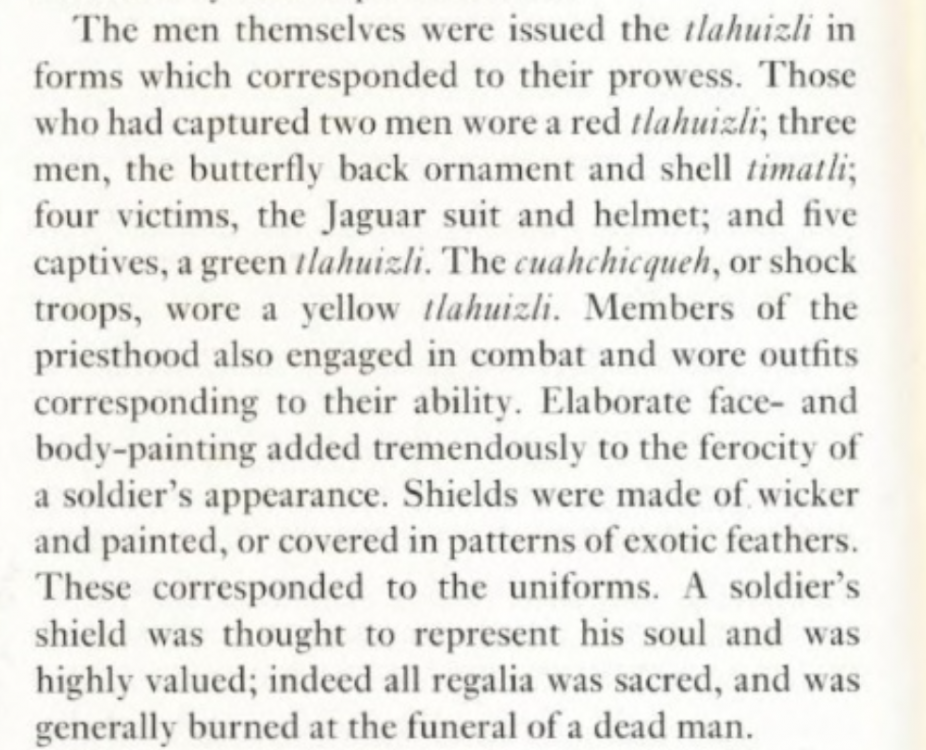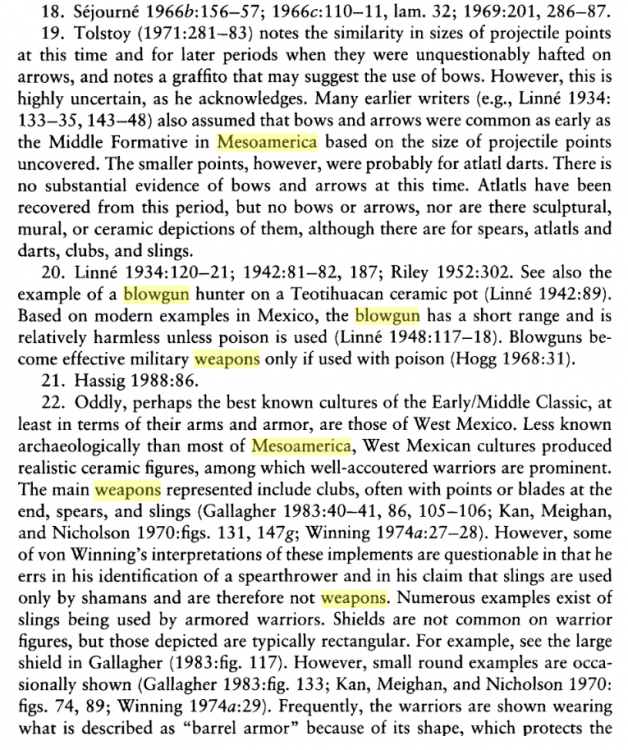-
Posts
25.684 -
Joined
-
Days Won
300
Everything posted by Lion.Kanzen
-
.thumb.png.ce58cea22940c255f5b0a735d5abee36.png)
===[TASK]=== Crowd Sourced - Thracians (Faction)
Lion.Kanzen replied to Cleo's topic in Game Modification
Maybe Thracian first then Epirotes. -
You have other game examples or references?
-
https://store.steampowered.com/app/314970/Age_of_Conquest_IV/ Looks interesting for our Grand campaign
-
yes is controversial theme because colonization. but i don't share the thing as genocide.
-
- 680 replies
-
- 1
-

-
- millenium a.d.
- vikings
-
(and 1 more)
Tagged with:
-
Its supposed the origin of Aztec is from North, many scholars say Arizona. http://nativeamericannetroots.net/diary/593
-
for some reason aren't in early stages(Olmec) or mayan culture. and Zapotecs represented are from triple alliance time frame.
-
https://en.wikipedia.org/wiki/Aztec_warfare Ichcahuīpīlli: Quilted cotton armor which was soaked in salt water brine and then hung to dry in shade so that the salt would crystallize inside of it. One or two fingers thick, this material was resistant to obsidian swords and atlatl darts. Ēhuatl: (lit. "skin") The tunic that some noble warriors wore over their cotton armour or tlahuiztli,[20] known in Spanish as tilma. Tlahuiztli: The distinctively decorated suits of prestigious warriors and members of warrior societies. These suits served as a way to identify warriors according to their achievements in battle as well as rank, alliance, and social status like priesthood or nobility. Usually made to work as a single piece of clothing with an opening in the back, they covered the entire torso and most of the extremities of a warrior, and offered added protection to the wearer. Made with elements of animal hide, leather, and cotton, the tlahuiztli was most effective by enhancing the Ichcahuipilli. Cuacalalatli: The Aztec war helmet, carved out of hardwood. Shaped to represent different animals like howler monkeys, predatory cats, birds, coyotes, or Aztec deities. These helmets protected most of a warriors head down to the jawline, the design allowed the warrior to see through the animal's open jaw and they were decorated according to the wearer's tlahuiztli.[21] Pāmitl: The identifying emblems that officers and members of prestigious warrior societies wore on their backs. Similar to the Japanese sashimono. These were frequently unique to their wearers, and were meant to identify the warrior at a distance. These banners allowed officers to coordinate the movement of their units.[
-
Shaved Warriors The shaved warriors (cuachicqueh) was the most prestigious Mexica warrior society. They were characterized by shaving their heads, except for a long braid over the left ear. They painted their faces and bald with two colors, one half blue and the other half red or yellow. They served as imperial shock troops, participating in special tasks, as well as providing assistance on the battlefield when necessary. It was required to have captured more than 6 captives and to have achieved dozens of other exploits to achieve this rank. Apparently, these warriors rejected captaincies in the army to remain active fighters on the battlefield. They were recognizable by their yellow tlahuitzli. When the warrior reached this rank, he swore not to step back during a battle; this under the warning that in case of missing this oath he would have to experience the pain of death at the hands of his companions was the most prestigious warrior society – their heads were shaved apart from a long braid over the left ear. Their bald heads and faces were painted one-half blue and another half red or yellow. They served as imperial shock troops and took on special tasks as well as battlefield assistance roles when needed. Over six captives and dozens of other heroic deeds were required for this rank. They apparently turned down captaincies in order to remain constant battlefield combatants. Recognizable by their yellow tlahuitzli, they had sworn not to take a step backward during a battle on pain of death at the hands of their comrades Others Broadly, Aztec army ranks were similar to the modern Western rankings of “General” and "Major”, as were the groupings of warriors into categories such as “enlisted men” or “officers”. However, while parallels can be drawn between the organization of Aztec and Western military systems, as each developed from similar functional necessities, the differences between the two are far greater than the similarities. The members of the Aztec army had loyalties to many different people and institutions, and ranking was not based solely on the position one held in a centralized military hierarchy. Thus, the classification of ranks and statuses cannot be defined in the same manner as that of the modern Western military.[8] The commoners composed the bulk of the army; the lowest were porters (tlamemeh [t͡ɬaˈmemeʔ]) who carried weapons and supplies, next came the youths (identified by the top knot hairstyle they wore) of the telpochcalli led by their sergeants (the tēlpochyahqueh [teːɬpot͡ʃˈjaʔkeʔ] "youth leaders"). Next were the commoners yaoquizqueh. And finally, there were commoners who had taken captives, the so-called tlamanih. [t͡ɬaˈmaniʔ] "captors". Ranking above these came the nobles of the "warrior societies". These were ranked according to the number of captives they had taken in previous battles; the number of captives determined which of the different suits of honor (called tlahuiztli [t͡ɬaˈwist͡ɬi]) they were allowed to wear, and allowed them certain rights like being able to wear sandals, jewelry, alter their hairstyles, wear warpaint, carry flowers onto the battlefield, pierce, and tattoo themselves. These tlahuiztli became gradually more spectacular as the ranks progressed, allowing the most excellent warriors who had taken many captives to stand out on the battlefield. The higher ranked warriors were also called "Pipiltin". Tlamanih (captor) was a term that described commoners who had taken captives within the Aztec army, particularly those who had taken one captive Cuextecatl Two captive warriors, recognizable by their red and black tlahuiztli and conical hats. This rank was introduced after the military campaign against the Huastec led by Tlahtoāni Ahuitzotl Papalotl[ Papalotl (lit. butterfly) were warriors who had taken three captives; this rank wore "butterfly" like banners on their backs Merchants Merchants, called pochteca (singular: pochtecatl), were perhaps the most valued source of intelligence to the Aztec empire. As they traveled throughout the empire and beyond to trade with groups outside the Aztec’s control, the king would often request that the pochteca return from their route with both general and specific information. General information, such as the perceived political climate of the areas traded in, could allow the king to gauge what actions might be necessary to prevent invasions and keep hostility from culminating in large-scale rebellion. As the Aztec’s empire expanded, the merchant’s role gained increasing importance. Because it became harder to obtain information about distant sites in a timely way, especially for those outside the empire, the feedback and warning received from merchants were invaluable. Often, they were the key to the Aztec army’s successful response to external hostility. If a merchant was killed while trading, this was a cause for war. The Aztecs rapid and violent retaliation following this event is testament to the immense importance that the merchants had to the Aztec empire.[11] Merchants were very well respected in Aztec society. When merchants traveled south, they transported their merchandise either by canoe or by slaves, who would carry a majority of the goods on their backs. If the caravan was likely to pass through dangerous territory, Aztec warriors accompanied the travelers to provide much-needed protection from wild animals and rival cultures. In return, merchants often provided a military service to the empire by spying on the empire's many enemies while trading in the enemy's cities.[12] They were able to earn their protection while further helping their empire. Prior to mobilization, formal spies called quimichtin were sent into the territory of the enemy to gather information that would be advantageous to the Aztecs. Specifically, they were requested to take careful note of the terrain that would be crossed, fortification used, details about the army, and their preparations. These spies also sought out those who were dissidents in the area and paid them for information. The quimichtin traveled only by night and even spoke the language and wore the style of clothing specific to the region of the enemy. Due to the extremely dangerous nature of this job (they risked a torturous death and the enslavement of their family if discovered), these spies were amply compensated for their work.[15] The Aztecs also used a group of trade spies, known as the naualoztomeca. The naualoztomeca were forced to disguise themselves as they traveled. They sought after rare goods and treasures. The naualoztomeca were also used for gathering information at the markets and reporting the information to the higher levels of pochteca
-
Its time Total war. Cuahchiqueh Description Life long warriors who have refused promotion to a command position so as to continue fighting. These men are considered the military elite and are great shock troops. They are equipped like most soldiers, in padded ichcahuipilli armour, chimalli shields and wield the maquahuitl club. They are also far more extravagantly dressed than common warriors. Since their prowess is well known, they cause great fear amongst any who must face them.
-
podes subirlo a Github a tu repo?
-
The cotton are only for breastplate.
-
Yes but the weapons are there, those weapons are correct. I need help with Zapotec in Classic period.
-
The clothes in this pic are from post classics.but not mostly of them.
-
a: young wearing only a maxtlatl; b: common people (Macehualtin) dress; c: noble (Pipiltin) or high ranking warrior dress; d: ruling classes and the clergy; e: less common way to wear the tilmatli; f: war dress. Aztec women wore a blouse called huīpīlli[1] ; also called huipil in Spanish and English) and a long skirt[2] called cuēitl (referred to as enredo in modern times). Women kept their skirt on them with a sash[1] called a cihua necuitlalpiloni .[3] In the Classical Nahuatl language, the couplet cuēitl huīpīlli "skirt [and] blouse" was used metaphorically to mean "woman". https://en.wikipedia.org/wiki/Aztec_
-
https://weaponsandwarfare.com/2017/08/05/the-post-classic-mexico/
-
Many of them here in Apocalypto movie. Here the mistakes of Mel Gibson movie. https://news.nationalgeographic.com/news/2006/12/061208-apocalypto-mel_2.html
-
One weapon, many names A weapon similar to the hul'che shows up in several cultures. The Aztecs used an almost identical weapon, the atlatl, a device gaining in popularity among modern sport hunters. The Nahuatl term atlatl is now commonly used for the wooden device, regardless of origin. While the earliest archaeological evidence is around 25,000 years old, it is believed that the atlatl has been in use for over 40,000 years. About the time when paleoindians crossed into Beringia. The simplicity and effectiveness of this weapon had allowed these early humans to hunt Ice Age megafauna such as the Mammoth and other large game. Eventually the development of the bow supplanted the atlatl as the weapon of choice in most of Mesoamerica. The bow was more compact and easier to carry, plus it was a much quieter weapon that allowed hunting prey easier.
-
Aztec and Zapotecs from left to right. https://en.wikipedia.org/wiki/Tlaximaltepoztli Hacha=axe Maza=Mace or club Macana=club Cuchillo= knife Venablo= Javelin Lanza=Spear Arco=bow Flecha=arrow Honda=sling
-
Ignore the Incan guy. Otomi mercenary


